What's New
Displaying results 761 - 770 of 4052
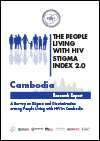
Resource | Publications,
Cambodia was one of the fastest growing HIV epidemics in Asia in the mid-1990s; however, the country has been successful in reducing its HIV prevalence and incidence over the last decade. Despite this success, Cambodia still needs additional efforts to address disparities at the subnational level, special needs among key populations, and general stigma and attitudes associated with HIV/AIDS. HIV-related discrimination is not only a human rights violation, but it also has an impact on people’s ability to access HIV testing, care, and treatment. The United Nations’ 2016 High-Level Meeting on Ending AIDS included “elimination of HIV-related discrimination” as one of three critical targets to achieve by 2020, along with reducing the number of new HIV infections and people dying from AIDS-related causes to under half a million.
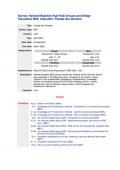
Resource | Data Sheets,
National Baseline BSS among Female Sex Workers (FSW) and their Clients was conducted in 32 States and Union Territories of the country. Topics included in the questionnaire: Background Characteristics, Knowledge, Opinion and Attitude towards STI/HIV/AIDS, Marriage, Family, Income, Number and Type of Partners, Sexual History, Risk Perception and Exposure to Intervention.
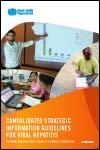
Resource | Guidelines,
The Consolidated strategic information guidelines for viral hepatitis summarize and simplify the overall approach proposed by WHO to collect, analyse, disseminate and use strategic information on viral hepatitis at local, subnational, national and international levels.
The document describes the use of strategic information at various stages of the response in the context of strengthening broader health information systems. Strategic information can be defined as data collected at all service delivery and administrative levels to inform policy and programme decisions.
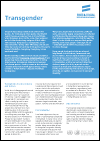
Resource | Fact Sheets,
Trans people in all parts of the world are at heightened risk of violence, harassment and discrimination. Human rights violations range from bullying and verbal abuse, to denial of healthcare, education, work and housing, to criminalization, arbitrary arrest and detention, violence, assault, torture, rape and murder. Exposure to these and related abuses may be further exacerbated by other factors, such as age, ethnicity, occupation, socio-economic class and disability.
Resource | Presentations,
Get an overview of the HIV/AIDS situation for Men Who Have Sex with Men (MSM) in the Asia-Pacific region. Browse and view charts and graphs illustrating data on this population's basic socio-demographic indicators, HIV prevalence and epidemiology, risk behaviors, vulnerability and HIV knowledge, HIV expenditures, and national response.
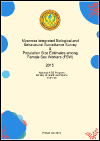
Resource | Publications,
The objectives of the survey were to collect data which can be used to track the HIV epidemic among FSW and guide the response in terms of providing prevention, care and treatment services for this population. Key measures of the survey included HIV seroprevalence, key risk behavior data, service utilization, experience with stigma and discrimination, and estimates of population size. The eligibility criteria for the survey were women aged 15-49 years old, currently living or working in the survey city, and who sold sex for cash or kind in the last 12 months.
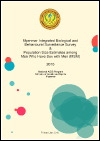
Resource | Publications,
The objectives of the survey were to track the epidemic using behavioral risk, experience with stigma and discrimination and HIV seroprevalence markers and assess the progress of the response in terms of utilization of prevention, care and treatment services.
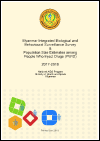
Resource | Publications,
This report presents the results of the 2017-18 Integrated Biological and Behavioural Survey (IBBS), among people who inject drugs (PWID) in selected sites in Myanmar, including a formative assessment and population size estimations. A formative assessment was conducted in September 2017 in each site to inform the implementation of the IBBS. The assessment was conducted to assess the particulars of PWID populations in each setting, to provide information to tailor RDS and PSE methods and logistic approaches to the different PWID population and epidemic context.
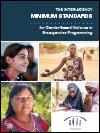
Resource | Publications,
This resource presents 16 Minimum Standards for the prevention of and response to gender-based violence in emergencies. As a whole, the 16 Minimum Standards define what agencies working on specialized gender-based violence programming need to achieve to prevent and respond to gender-based violence, and deliver multisectoral services. The objective of the Minimum Standards is to establish a common understanding of what constitutes minimum prevention and response programming in emergencies.
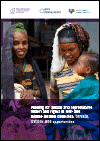
Resource | Publications,
Sexual and reproductive health and rights (SRHR) are essential for reaching the Sustainable Development Goals (SDGs) for health. The Guttmacher-Lancet Commission found that meeting the unmet need for contraception for 214 million women in developing regions would avert an additional 67 million unintended pregnancies in 2017. If combined with full care for pregnant women and newborns, this reduction in unplanned pregnancies would reduce maternal deaths by 73% (from 308,000 to 84,000) and newborn deaths by 80% (from 2.7 million to about 538,000).





